Review Mamiya RZ67ProII
This is the review I wrote about the Mamiya RZ67ProII back in 2008.
Remember this was before Mamiya decided to bring it back to live with the digital back, so now this review is very actual.
And to be honest (and you will understand when you read the review) it’s great Mamiya is bringing this great camera back.
When visiting Los Angeles in 2007 I bought a film back for my Mamiya 645AFD/II, just for fun nothing more.
I shot one roll of film while in LA and a few back home, thinking it would stop with that…….
Well sometimes things don’t work out the way you plan (obvious).
You just have to love film and digital
I will not say that film is better than digital, and I will certainly not change my workflow from digital to film, I’m still 99% digital. HOWEVER seeing the current state of the dollar/euro and the current price point of medium format cameras and lenses I can say one thing, surf online and buy one. People who know me will know I’m a big fan of bigger sensors, in my opinion they are great for that real 3D look you can get with the wonderful compression and DOF you get with longer lenses on a large sensor (film). There are alot of people who think different about it and claim that you can get the same effect with a Canon 1.2L lens on a 1DsIII but I have shot with both system and can say, it doesn’t even come close.Yes it’s a great system and the 1.2L is an amazing lens which I love (although I don’t own one now) but the look you get from the bigger real estate called MF is totally different, just work with both and you’ll see pretty quickly what I mean.
*
*
So back to the story.
Shooting film on the 645AFD/II was giving me great results and I like to use film to have an instant effect, no photoshop just press the shutter and make the look you want by choosing the correct film and pushing or pulling it.
Or as some would say back to the stoneage….. 😆
Because I’m a sucker for old cameras I always had my eyes open for a nice boxy camera with preferable a lever to cock the shutter before every shot. However that camera would be just for fun (I know I said that before) and I did not want to spend a fortune on it. While looking online I found a wonderful deal for a Mamiya RZ67 ProII with a 110mm f2.8 lens, I added the 180mm lens on the order and including shipping was below 850 euros (including wastelevel finder and filmback). Sadly the supplier made a mistake and send me a 90mm lens instead of the 110mm f2.8, seeing the pricepoint of app $350.00 for the lenses I decided to keep the 90mm and add the 110mm f2.8. When the camera came in it was indeed a wonderful experience, the wastelevel finder is something that I always had a weakspot for and the shuttersound gives me goosebumps everytime I use the camera. What more do you want……Well…….
*
*
Going from analogue to digital (oh no not again)
What I did not expected was the impact the camera had on me, somehow I felt myself shooting more film than ever before and I loved the way the camera operates and feels, so I decided to inform if Leaf offers a convertor plate to mount the Leaf Aptus on the RZproII and they do. I only had seen prices of other manufacturers and was a bit afraid that it would not be reasonable to invest that amount of money into a digital solution for the RZ. Luckily the Leaf solution was well under 600 euros (still alot of money in comparison with the rest of the set) and a few weeks ago I ordered the plate.
What made the decision to mount the leaf to the RZ pro II ?
Glass and feel of the camera.
I can really advise anyone to pick up the RZ pro and just shoot some film through it, when you get the film back you will very quickly see what I mean. Even on the scans from my V700 Epson (see review also in this blog) I can see alot more contrast and detail compared to the lenses on the 645 system. So mounting the digital back on the RZ pro II should give me (I hope) an improvement over the 645. There are also drawbacks of course.
When moving from a full frame DSLR to the 645 the pace in which you shoot will go down. AF is much more precise but also slower and most of the time I prefer manual focus on the 645. When moving to the RZ67 pro II it’s a culture shock for most, there is no AF, no metering in the camera, shuttertime and aperture settings are very basic and in full steps etc.
Then why do it ?
Most of the time I already meter my scene with the sekonic L758 which is incredibly accurate and when you know how to use it it’s faster than checking the exposure on your camera and readjusting, because most of my work is with flash I can adjust the strobes to exactly what I want elimating the problem of working in full stops. But most of all, the RZ67 ProII uses the maximum shutterspeed as sync speed.Meaning you can use flash outside up to 1/400 (the fastest shutterspeed the RZproII supports), for me that’s a huge improvement over the 1/125 of the 645 or DSLR. And of course, the feel of the camera, I can’t really explain this to most people but shooting with both the 645 and RZ67proII gives me much more satisfaction than shooting with a DSLR. Update 2011 : At the moment Phase One released their LS lenses which makes it possible to shoot up to 1/1600 with the 645 system. I still use the DSLR on many occassions where speed is needed or higher ISOs are needed, so for me there is no better system. I’m a Canon shooter myself and when I see the prices paid second hand for the better L lenses compared to the RZ lenses I can only softly smile. Although the quality is much better than the L lenses the prices are not even coming close, expect to pay anywhere from $200.00 to $800.00 for great lenses which will blow the L glass away. And yes they are heavier, you have to set everything manually, and yes you can’t shoot birds in flight/sports etc. or with candle light. But what you can shoot with it, it does with a quality that will blow you away.
So instead of buying that 70-200 f2.8 L IS Buy a :
Mamiya RZ67 Pro II with a film back and wastelevel finder
110 mm f2.8
90mm
180mm
an Epson V700 scanner with a better scanning tranny for MF
Try it and I think you will like it.
Remember however that when going digital on the MF system it will be more expensive than a top end digital DSLR but you can use the back on different cameras with convertor plates.
see a list of RZ options on B&H RZ options
Going digital: June 20th 2008
The first test I did was late at night and only contained a small lightbulb as my subject, so nothing spectaculair. I shot my 180mm wide open and the first thing that was noticable was the extreme sharpness of the file. I thought the 120mm macro from the 645 was sharp but this was better. Yesterday I did a quick small session with Roosmarijn to test out the setup before using it in normal shoots.
My opinions are mixed.
I LOVE the feel of the RZ, although framing is a bit of a problem with the edging on the focusscreen, I found myself often framing for the square format or framing with the wrong crop. Also because I now had to think about both cropping and remembering which crop to use the left/right swap is more problematic. But nothing you I can’t get used to I guess. The real problem however was getting the perfect focus. Outside the focussing is rather easy and everything is clearly seen, in the studio it’s a totally different story, the lights are MUCH lower in intensity and focussing becomes rather unpleasant, throw in the crop and the left/right swap and shooting becomes a battle with the camera.
With the 645 I don’t have to think about the camera, only the model. But again this is something that will work out fine over time, I will probarbly start out with working from a tripod and than move on to hand hold (my preference).
*
*
Brightscreen
I did order a new focusscreen from brighter screen, which I hope will be delivered in about 2 weeks. It should be 3-4 times brighter than the standard screen and has a microprism + diagonal focus assist. I will post some more in this review tomorrow night when I do my fist commercial session with the camera.
*
*
First Commercial shoot : June 21th 2008
Today I shot a session with the RZ on Tripod and although I thought it would be a dissaster (because I normally shoot handheld) in the end it was ok and to be honest very nice. Sharpness of the system is amazing and in the new situation it’s wonderful to be able to shoot a full body model with a 180mm lens (has nothing to do with the 645 vs the RZ of course but with the new studio were I can move MUCH further backwards). I still have to make a calibration file for the RZ but I feel it’s underexposing a bit more than the 645 which underexposes app 4/10 of an stop. I will try to this next week during a workshop were I have to explain it anyway. Workflow is just as fast as with the 645, and shooting from the tripod speeds things up considerably when I have the correct composition and focus, so I won’t rule out that I keep shooting from tripods or other systems.
Although focussing is still problematic with low light (should be dealt with when the new screen arrives) I’m really pleased with the overall sharpness the system gives me.
This is a 100% crop from one of the shots I did today.
Continued June 25th 2008:
I picked up a large studio pole for the RZ to shoot from a fixed position that can be very easily changed (you can push the pole through the studio and within a few seconds you can change everything to make the perfect composition). I always said I would probably never shoot from a tripod in the studio (well that is still true) but shooting with the RZ really forced me to do it, the camera can be used handheld but with the hours we run it gets very heavy in the end. What does help is that you can much easier make your composition and keep it for several shots. What also is great is that you can much easier coach the model without worrying about the camera/composition. One thing you have to watch out for is overshooting the back, I wondered what was meant with this but I found out today, in the middle of a great set a few shots appeared with weird purple tops with ghostly images. It took me a few moments before I understood what was going on (and yes I was a bit worried), so you have to wait for the beep of the back before you make the next exposure (well sounds logical).
The outcome of the pictures is absolutly stunning, I was already more than please with the 645AFD/II and the quality from that camera but the RZ really outshines the 645.
It’s not perse sharper than my 120MM macro but the feel of reality of the shots is better on the RZ for sure now. Today I did a session with Cherelle, a model I have shot many times, and the images have a different look than the pictures from the 645AFD. It’s very hard to explain and some people will claim it’s BS, well ok that’s their opinion I know what I see. But to make it clear, the files have a more 3D look than the files from the 645. This is especially seen on necklaces, rings etc. the real materials that normally already jump out in a shot by their depth are now enhanced even more. I already thought I was seeing this effect when I started testing but after today I’m sure.
It’s hard to see on internet versions but in prints it’s clearly seen, I have to admit that it’s not a day and night difference but for me it’s worth every effort it takes to shoot the RZ instead of the 645.
As mentioned before some people online will claim they never see a 3D effect in a shot, and some say they will.
I’m very visual and often see the 3D effect, most of the effect is created by:
1. Lights/shadow
2. object
3. compostion/angle
4. background
5. DOF/FOV
But even when all these are app the same I see a clear increase from my Canon FF to the 645AFD and a small increase from the 645AFD to the RZ. And to be honest some people will say I’m already happy with the 5D or 1DsIII or whatever camera, and as long as it pays the bills that’s great, I’m however “handicaped” with that drive to get the absolute best out of my shoots, even when my customer may not see it…. call it personal.
Continued with the Brightscreen June 30th 2008:
Today (3 days early) the brightscreen arrived.
Here is the link to the company: http://www.brightscreen.com/enter.html
I ordered the #5 which is a prism screen and a split screen in one.
They promise a much brighter image and better focussing, and because I was not 100% happy with the original focussing screen from the RZ I was more than eager to open the package and test the screen. Writing a review about a focussing screen is a mixed bag, there actually isn’t much to write about it to be honest. But the impact it has on the focussing of the RZ would justify 10 pages of review.
So let’s make the letters bold:
The brighter screen improves the focussing and ease of use of the RZ by a very wide margin
Now in a bit more words.
The focussing screen is indeed a lot brighter than the original screen, but it still won’t burn your eyes of course. What is an inmense improvement are the focus aids. In the center there is a horizontal split which helps focussing, if a line goes through the split it will show you a broken line when the subject is out of focus, the line will be correct when it’s in focus. But there is more……
Surrounding the split there are the prism helpers, diamond shaped when visable meaning that your subject is out of focus, and they dissapear when the subject is in focus. Combining the two is a very good option, I tested some dry scenes in the studio with normal ambiant light. The studio is relativly dark now and with the original screen the image is muddy and it’s a bit hard to see when it’s in focus or when not. Change the camera to a part of the studio were the sun enters and it’s easy to focus. I changed the screen and thanks to the visual aids even the darker areas of the studio became a breeze to focus, the light part however was much easier doing it by eye and with the aid of the visual part of the screen it became very easy and very fast to focus. Friday I will do a session were I will further test the screen, so I will post more then, but what I have seen now it’s a huge improvement and worth the money. Brighter screen also delivers screens for other cameras, so visit their website.
*
*
22 February 2011 :
Ok we are now a lot further in time and ‘m still using the RZ almost every shoot in the studio.
The only thing that changed is that I added the Tilt and Shift convertor for some cool special effects on the fashion shots like this :
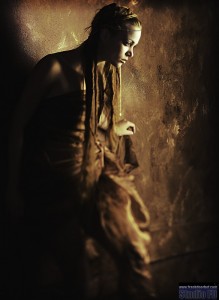
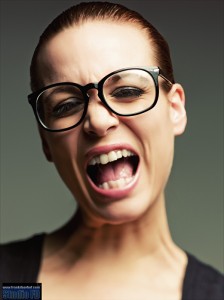 the only thing that really changed is the digital back I use, I switched from the Aptus22 to the AptusII7 which gives a bit more resolution but keeps the awesome quality I’m used to from Leaf of course.
the only thing that really changed is the digital back I use, I switched from the Aptus22 to the AptusII7 which gives a bit more resolution but keeps the awesome quality I’m used to from Leaf of course.
New camera !!!
The fun thing is that Mamiya decided to bring back the RZ67ProIID a while ago breathing new life into this system, that’s also one of the reasons I decided to repost this review although it started in 2008. The new system is in fact the same as what I use expect you don’t need a cable anymore between the camera and the back, but to be honest it’s doesn’t bother me that much.
I’m still 100% convinced that this is one of the best studio cameras out there and would HIGHLY recommend you to check one of the new systems out and you will probably fall in love with it, only problem is that pricing second hand has gone up A LOT since 2008….
Feel free to comment or ask questions.
I had to add this video about the rerelease of the RZ

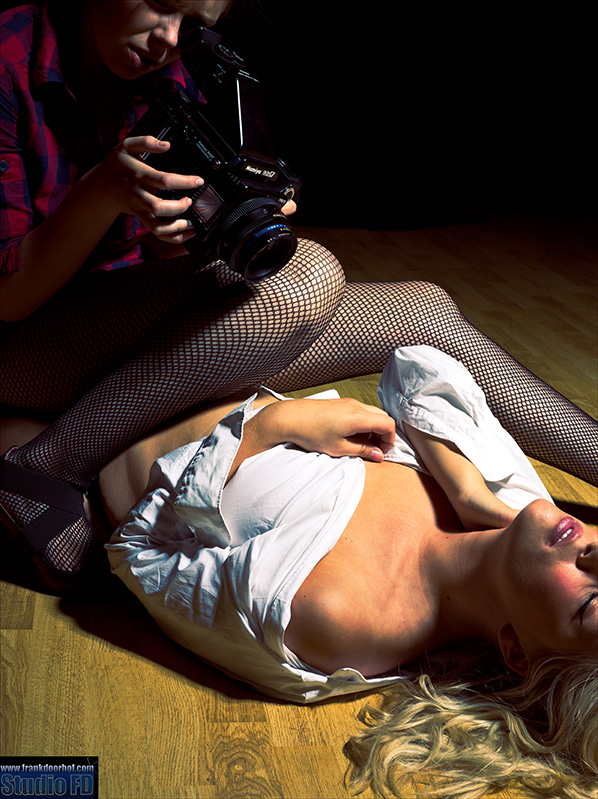

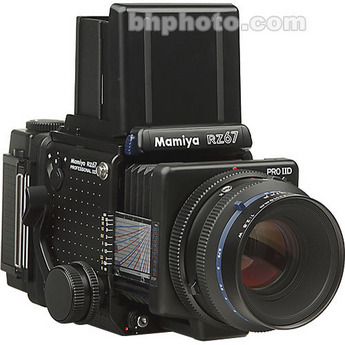

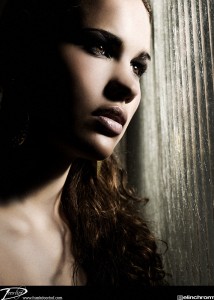
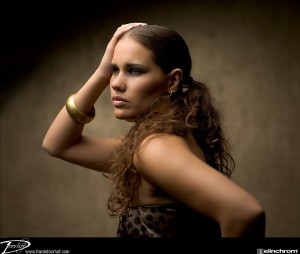

Great review / blog. I totally agree on the rz67. I was able to purchase a mint conditioned rz67 pro iid with the 110 and 180 lenses for a great price. Back to basic for now but hopefully digital in the future.
about the “only full stops on the rz” i thought the lenses featured half stops for the aperture and the body itself should give intermediate stops for shutter speed too? my rb67 lenses at least have the half f-stops…
wish i had a rz with digital back too…
You are right, the lenses vary between half and full stops.
Shuttertimes are not.
hmm, just checked the manual. there even is a table giving the times for the intermediate shutter speeds. (1/400, 1/250 1/180 1/125 1/90 1/60 1/45 etc from the RZ67PROII(D) manual). do you have rz67pro or proII? if thats a new feature on the proII(D) that would be good to know when buying one of those tanks 😉
I have the non D version.
But you are 100% right, shutter time is in half stops.
Lenses vary full and half stop.
I have the RZ Pro II, and it’s a great camera. It seems you use the Mamiya autofocus more now than the RZ, though, judging by your videos, is that right?
The RZ produces some of the best results I have gotten from any camera. One of the downsides, though, is that getting precise focus can be tricky, especially at wide apertures where it can be almost impossible to get the focus exactly where I want it, especially handheld. So I usually stop down the aperture to at least f16. That works great when the effect I want is to have everything in focus, but if I want to take advantage of the shallow depth of field, I have to slow things way, way down because of the trickiness of the focus, and even then it’s sometimes hard to judge.
I have the same brightscreen that you have, Frank. In fact, I got mine after reading your review when it was first posted. It’s a great screen, and it can get very precise results, but only if you can slow things down a lot and/or if you stop down the aperture a lot so you can work more quickly.
Sometimes I like the manual focus, but it’s not as easy as working with an autofocus camera, not by a long shot.
The results are still amazing. The lenses are all spectacular, and the camera is fun to use, except in fast moving environments.
I did not forget my RZ don’t worry but at the moment I’m testing the vgrip on the phase one DF so I’m shooting a bit more with the DF.
I’m also still recovering from the “attack” on my balance system from last year and seeing everything moving the other way around through the viewfinder does not help 😉
But I’m 90% recovered so it’s going great and will start using the RZ very soon again on a regular basis, can’t wait 😉
Hi,
I own RZ Rro II for over 10 years. Have many lenses and accesories. I hope to write a long comment on this on the blog – once Frank will speed-up my registration process 🙂
In the meantime… RZ Pro II has time settings in halves but apperture setting is continous – full and half setting marks are just for reference. So a user can set ANY position on an apperture ring and this will be reflected on the amount of light going inside.
Just imagine – AE Prism gives the shutter speed accuracy of 1/6 (!) of EV in Auto mode and lens would be able to give only 1/2 EV steps? No kidding 🙂
BTW: Frankly speeking for outdoor sceenes A/S metering system on AE Prism gives you usually enough accuracy with trannies so you can send your lightmeter back home. This is mainly the reason I am using this additional 1 kg of equipment all the time.
Happy RZ shooting! 🙂
Irek
One thing you leave out why I will never leave my lightmeter home :D, I’m shooting mostly fashion and models and I need the skintones to be accurate, a reflective meter never does this 100% correct, so I will always use the light meter, and when you know how to use them it’s much faster 😀
The aperture is indeed mentioned in half stops and you can set it in between but I found this to be rather tricky.
I browsed the Internet and did not find an answer: is it possible to couple ZD back with RZ Pro II or it is only possible with Pro IID body?
Take care Irek
Should work because both phase one and Leaf can be mounted and many more, for the ZD I don’t know for sure, best is to check with a dealer.
I asked Mamiya America this question as we do not have an official Mamiya dealer in Poland. Below there is an answer:
“Sorry, but there never was an adapter made for the RZ Pro II to accept a ZD back. A ProII however is able to be used with any of the new Mamiya DM series backs, and adapter plates.
The backs may be seen here: http://www.mamiya-usa.com/dm-series-digital-backs.html”
Bad news…
Hummm, I would have expected the RZ to have no problems with the backs, but I guess they do.
The RZ is a very simple camera it only needs a wakeup cable. But I guess there is more going on in the convertor than meets the eye. It could be fun to just check it out once.
hi frank,what brand of adapter you use whit aptus 22?
thanks paolo
Hi,
I use the original Leaf supplied adaptor.
Hi, thanks for the great review, very interesting site/blog.
Ik fotografeer sinds kort met een RZ en vind het matglas ook matig. De brightscreen site werkt niet erg. Is de brightscreen een zelfde soort als op de mamiya webshop?
http://www.mamiyawebshop.nl/product/125645.html
Of is dit een ander type?
Gezien de prijs is het een ander type.
De bright screen was een stuk duurder, maar die werkt echt zeer zeer goed.
De eigenaar van Bright screen is overleden vandaar dat de website het waarschijnlijk niet meer doet.
Een alternatief zou http://www.mattclara.com/maxwell/ kunnen zijn.
Inderdaad behoorlijke prijsverschillen, maar weer een stuk wijzer.
Thanks!!
Hi Frank, thanks for the review. I recently bought a RZ67II and want to use it in a studio setting. Can I trigger my bowens flashes with the pulsar trigger attached to the hot shoe of the RZ67II? Do I need a sync cable to the x sync of the lenses? Thanks in advance. Regards,Mark
Should be no problem, I also don’t use anything else with the skyport.
Thnx Frank, i’ll give it a test shoot.
Hello – I’m not sure if you still visit here. I’m planning on buying a second hand mamayi RZ Pro II which is being sold as a kit with various extras including 110 and 180 lenses.
I’ve only been using digital SLRs for the last 6 years and fancied exploring film and medium format. I do enjoy landscape and wondered if I would really need the widest lens I can get for this body.
I think the widest is a 65mm? Have you used this lens and how did you find it?
Let me answer this.
I didn’t try the 65mm myself but overall the quality of the RZ lenses is really good, so I guess this one would be great too.
Hi Frank, I enjoyed reading your article on the mamiya rz proii and learnt a few things. I recently bought the proiid version at a reasonable price 1200 euros which includes a prism finder which makes it easier to get the right exposure when using the ael mode.it came with a 110mm lens. My passion is still life photograpy. Till now I have been working with the canon 5dii. I do’nt have a digital back yet but I’ve taken some slides with the mamiya and had them scanned. The results were more than I had expected,